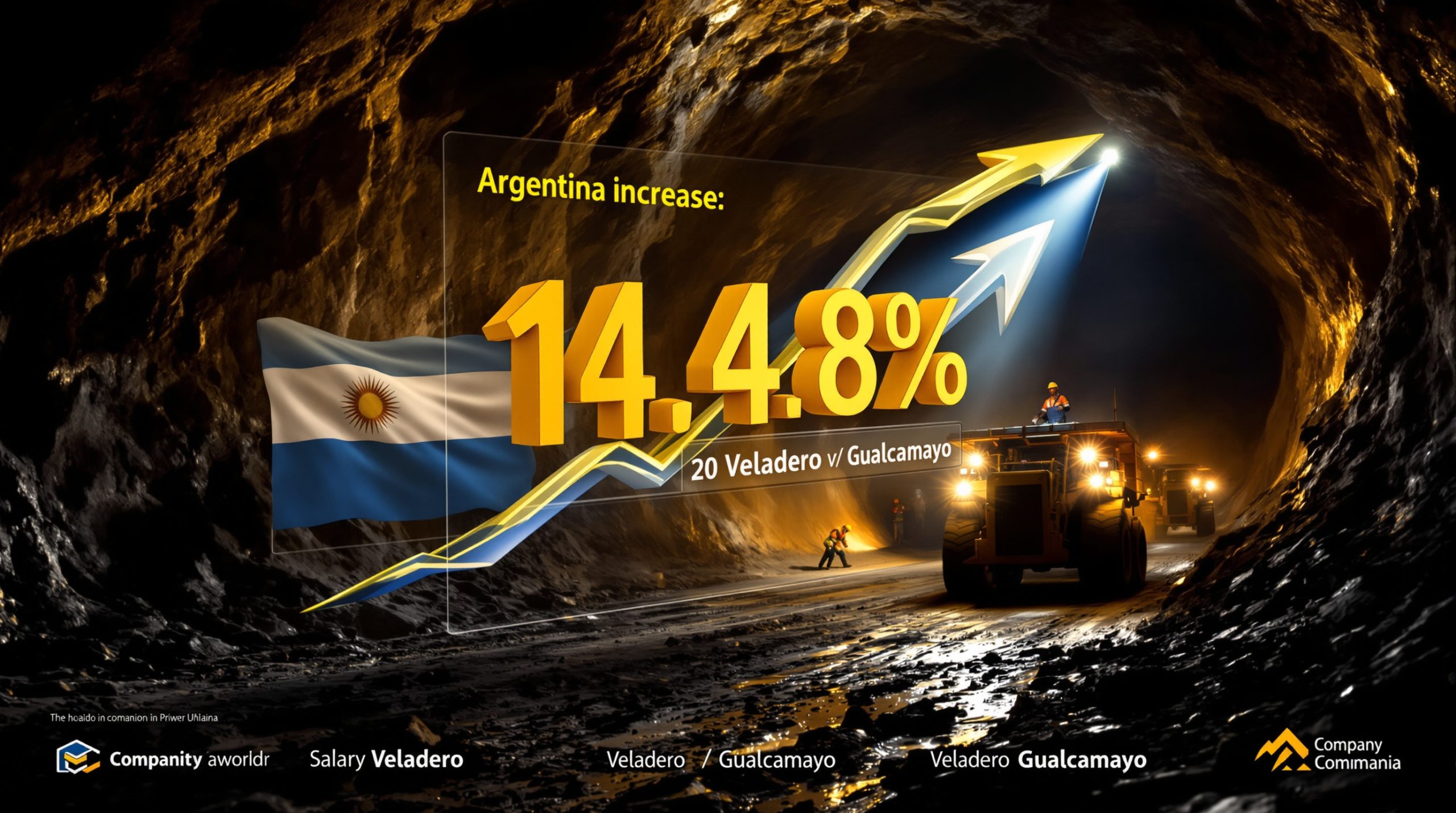Revolutionizing Antimony Processing: Inside Locksley Resources' Mojave Project Strategy
Antimony processing is undergoing a transformative shift in the United States, with Locksley Resources' Mojave project positioned at the forefront of this revolution. The strategic partnership with Rice University marks a pivotal development in addressing critical supply chain vulnerabilities while establishing domestic processing capabilities for this essential mineral.
What Makes Antimony a Critical Strategic Mineral?
Antimony has emerged as a vital resource in modern industrial applications, with particular significance for national security and emerging technologies. Understanding its importance provides context for why the Mojave project represents such a strategic opportunity.
The Strategic Importance of Antimony in Modern Applications
Antimony serves as a crucial component across multiple strategic sectors, with defense applications representing one of its most critical uses. The metal plays an essential role in ammunition production, where it hardens lead bullets and improves their performance characteristics. Beyond ammunition, antimony finds application in explosives, propellants for missiles and rockets, and various components of armored vehicles.
The mineral's flame-retardant properties make it indispensable in military equipment, aircraft, and protective gear. These flame-retardant applications extend to civilian sectors, including building materials, electronics, and transportation safety systems.
In the rapidly evolving energy sector, antimony compounds are increasingly utilized in certain battery technologies and energy storage systems. As renewable energy integration accelerates, these applications are expected to grow in importance over the coming decade.
The versatility of antimony and its essential role in multiple critical applications make it a cornerstone of modern industrial capabilities. According to the U.S. Geological Survey (USGS), these diverse applications have driven consistent demand growth despite periodic supply constraints.
Current Supply Chain Vulnerabilities
The antimony supply landscape presents significant challenges for the United States and its allies. According to USGS data, China produced approximately 48,000 metric tons of antimony in 2022, representing about 55% of global production, which totaled around 87,000 metric tons.
More concerning is that approximately 95% of refined antimony supply currently comes from countries outside U.S. alliance networks. This extreme dependency creates substantial supply chain vulnerabilities, especially considering antimony's critical minerals directive and applications in defense systems and infrastructure.
The Trump administration recognized these vulnerabilities by designating antimony as a critical material under executive orders focused on increasing domestic mineral production and reshoring supply chains. This designation acknowledges antimony's strategic importance and the risks associated with its current supply structure.
The absence of domestic processing capacity represents perhaps the most significant vulnerability. Currently, the United States lacks any commercial-scale antimony processing operations, creating a critical gap in the domestic supply chain even when raw materials might be available.
How Is Locksley Resources Addressing the Antimony Processing Gap?
Locksley Resources has developed a comprehensive strategy to address the antimony processing deficit through its Mojave project. This approach combines strategic antimony insights with innovative processing solutions through academic partnerships.
The Mojave Project: Strategic Location and Historical Significance
The Mojave project represents a significant opportunity to revitalize domestic antimony production and processing. Located in California's Mojave desert, the project encompasses over 250 claims across contiguous North Block/Northeast Block and El Campo prospect areas.
This strategic location offers notable geological advantages. The North Block directly abuts claims held by MP Materials, while El Campo lies along strike of MP's Mountain Pass mine. This proximity to established mineral operations highlights the area's strong geological continuity and exploration potential.
Of particular significance is the historic Desert antimony mine contained within the project boundaries. This mine, which ceased operations in 1937, represents one of the highest-grade known antimony occurrences in the United States. While historical production data provides limited quantitative information, the qualitative assessment of this deposit as exceptional among U.S. antimony resources underscores its potential value.
The project's California location also offers logistical advantages, including access to transportation infrastructure, proximity to potential industrial customers, and operation within a stable regulatory environment. These factors enhance the project's commercial viability beyond the inherent resource potential.
Rice University Partnership: Dual-Initiative Approach
Locksley's partnership with Rice University forms the cornerstone of its antimony processing strategy. This collaboration focuses on two complementary initiatives that address both immediate processing needs and future applications.
The first initiative centers on developing green hydrometallurgical extraction methods specifically designed for antimony from mining feedstocks. This approach aims to create more environmentally sustainable processing technologies compared to traditional methods, which often involve significant environmental impacts.
The second initiative explores antimony-based materials for next-generation energy storage applications. This forward-looking research connects current mining operations with future technological developments, potentially creating additional value streams for the project.
This partnership builds on Rice University's established expertise in critical raw materials supply programs. The university previously collaborated with Metallium (formerly MTM Critical Minerals) on flash joule heating technology to maximize metals recovery from waste materials and ore. This experience provides a foundation for the antimony-focused research initiatives.
As Locksley chair Nathan Lude stated: "We are rapidly advancing our upstream strategy and helping to re-build downstream capacity through materials innovation which America urgently requires." This statement encapsulates the dual focus on both immediate supply chain needs and longer-term technological innovation.
What Makes This Processing Strategy Innovative?
Locksley's approach to antimony processing at the Mojave project incorporates several innovative elements that differentiate it from traditional mineral development projects. These innovations address both technical challenges and broader strategic considerations.
Green Hydrometallurgical Extraction Technology
The partnership with Rice University aims to develop sustainable processing methods that minimize environmental impact while maximizing antimony recovery. This green hydrometallurgical approach represents a significant advancement over traditional extraction methods.
Conventional antimony processing often involves pyrometallurgical techniques that can produce significant emissions and waste materials. By contrast, hydrometallurgical approaches typically offer better control of environmental impacts, reduced energy consumption, and potentially higher metal recovery rates.
The specific technical details of the hydrometallurgical process being developed remain proprietary, but the focus on "green" methodologies suggests attention to water recycling, minimal chemical usage, and reduced waste generation. These considerations align with both regulatory requirements and market expectations for modern mining innovation trends.
The innovation extends beyond the specific chemical processes to include the application of these methods to the particular characteristics of the Mojave antimony resources. Customizing extraction technologies to specific ore types can significantly improve recovery rates and operational efficiency.
Integration of Upstream Development with Downstream Innovation
One of the most distinctive aspects of Locksley's strategy is the integration of resource development with materials innovation. By connecting mining operations directly with research into new applications for antimony, the company is creating a comprehensive mine-to-materials supply chain.
This vertical integration approach differs from traditional mining models that focus solely on resource extraction and primary processing. By incorporating research into advanced applications, Locksley potentially creates additional value streams and market opportunities beyond the conventional commodity markets.
The focus on energy storage applications is particularly forward-looking. As renewable energy adoption accelerates, energy storage technologies are becoming increasingly important. If antimony-based storage solutions prove commercially viable, this could create significant new demand for the metal.
This integrated approach also provides resilience against market fluctuations. By diversifying across both traditional and emerging applications, the project may be less vulnerable to price volatility in any single market segment.
Potential for Government Funding and Support
The strategic alignment with U.S. critical mineral needs positions the Mojave project to access government funding opportunities. As the first planned domestic antimony processing facility, the project addresses a critical gap in U.S. strategic mineral capabilities.
The Biden administration has emphasized rebuilding domestic supply chains for critical minerals through various policy initiatives and funding programs. While specific funding commitments for antimony processing have not been publicly disclosed, the alignment with strategic priorities creates potential opportunities.
Beyond direct funding, the project may benefit from policy support including expedited permitting processes, research grants through academic partners, and potential purchase agreements from government agencies that utilize antimony in defense applications.
This strategic positioning represents an innovative approach to project development that leverages broader national priorities to support commercial objectives.
What Are the Broader Implications for U.S. Critical Minerals Strategy?
The development of antimony processing capabilities at the Mojave project has implications that extend beyond the specific project to influence broader U.S. critical minerals strategy and supply chain security.
Establishing Domestic Processing Capabilities
The development of antimony processing at the Mojave project represents a significant step toward rebuilding domestic critical minerals capacity. This initiative directly supports national security objectives by reducing dependency on foreign suppliers for strategic materials.
Currently, the United States lacks any commercial-scale antimony processing operations, creating a critical vulnerability even when raw materials might be available domestically or from allied nations. Establishing processing capabilities addresses this fundamental gap in the supply chain.
The creation of domestic processing capabilities also supports workforce development in advanced manufacturing and metallurgical fields. These technical skills have broader applications across the critical minerals sector, potentially supporting other mineral processing initiatives beyond antimony.
From a strategic perspective, demonstrating the ability to establish new processing capabilities for one critical mineral creates a potential template for addressing similar gaps in other mineral supply chains. The lessons learned and expertise developed may have applications beyond the specific case of antimony.
Supporting Defense, Energy, and Technology Sectors
The processed antimony will serve multiple strategic sectors, including defense applications, energy storage systems, and advanced technology components. This diversified application base strengthens the economic viability of the project while addressing critical national needs.
For the defense sector, a secure domestic supply of antimony supports production of ammunition, explosives, propellants, armored vehicles, missile components, and electronic systems. These applications directly impact military readiness and operational capabilities.
In the energy sector, antimony compounds may contribute to certain battery technologies and energy storage systems. As renewable energy integration accelerates, these storage technologies become increasingly important for grid stability and resilience.
The technology sector utilizes antimony in various specialized applications, including certain semiconductor components, infrared detectors, and specialized glass products. Secure supply chains for these components support continued technological innovation and manufacturing capabilities.
By serving these multiple sectors, the Mojave project supports broader economic security beyond any individual industry, creating a more resilient industrial base.
Creating a Model for Critical Minerals Development
Locksley's approach of combining resource development with academic research partnerships creates a potential template for other critical minerals projects. This collaborative model leverages academic expertise to solve industrial challenges in mineral processing.
The partnership with Rice University demonstrates how academic research capabilities can be directed toward commercial applications in critical minerals processing. This model could potentially be replicated for other minerals facing similar processing challenges.
The focus on both immediate processing needs and future applications also provides a framework for long-term development strategies. By considering the entire value chain from extraction through advanced applications, mineral development projects can potentially create greater economic and strategic minerals reserve value.
If successful, this model could influence how other critical minerals projects are structured, particularly for minerals with complex processing requirements or emerging applications in advanced technologies.
What Are the Next Steps for Antimony Processing Development?
The path from concept to commercial antimony processing at the Mojave project involves several key development stages. Understanding these next steps provides insight into both the timeline and challenges ahead.
Technological Development Roadmap
The partnership with Rice University will likely establish a phased approach to technology development, moving from laboratory testing to pilot-scale operations before full commercial implementation. This staged approach allows for refinement of processing methods while minimizing technical risks.
Initial laboratory research will focus on optimizing hydrometallurgical methods for the specific characteristics of Mojave antimony resources. This phase typically involves detailed characterization of ore samples, testing various extraction parameters, and initial process design.
Following successful laboratory results, pilot-scale testing would validate the processes at a larger scale and generate engineering data for full-scale design. This intermediate step is crucial for identifying potential scale-up challenges and refining operational parameters.
The final design and construction of commercial processing facilities would incorporate lessons from both research phases while adapting to site-specific conditions and regulatory requirements. This methodical approach reduces technical risk while maximizing the likelihood of successful implementation.
Scaling Production to Meet Market Demands
As processing technologies mature, Locksley will face the challenge of scaling production to meet market demands. The high-grade nature of the Mojave deposit provides a solid foundation for commercial-scale operations.
Initial production might focus on serving the most critical applications, particularly in the defense sector where supply chain security commands premium value. As operations stabilize and expand, production could diversify to serve broader commercial markets.
The scaling process must balance several factors, including capital efficiency, market development, and operational optimization. Strategic partnerships with end-users might support this scaling process by providing market certainty for initial production volumes.
The dual focus on both traditional applications and emerging technologies provides flexibility in scaling strategies. If certain market segments experience stronger growth or more favorable pricing, production can potentially be directed accordingly.
Integration with Broader Supply Chain Development
The success of antimony processing at Mojave will depend partly on the development of complementary supply chain components, including specialized manufacturing capabilities for antimony-containing products.
Coordination with downstream manufacturers in defense, energy storage, and other sectors will ensure that processed antimony meets the specific requirements of these applications. These relationships may involve technical collaboration on product specifications and quality control parameters.
Broader policy initiatives supporting domestic manufacturing could create additional demand for domestically processed antimony. These initiatives might include procurement preferences for materials with secure supply chains or investment incentives for manufacturing facilities using critical minerals.
The comprehensive nature of Locksley's strategy, addressing both processing technology and material applications, positions the company to participate actively in these broader supply chain developments rather than simply serving as a raw material provider.
FAQ: Understanding Antimony Processing at the Mojave Project
What makes antimony processing particularly challenging?
Antimony processing presents several technical challenges that have contributed to the consolidation of global processing capacity in a limited number of facilities. The primary challenges include:
- Complex mineralogy where antimony often occurs with other elements requiring separation
- Variable ore types requiring customized processing approaches
- Potential environmental concerns including management of arsenic and other elements often associated with antimony
- Process optimization to achieve commercial grades (typically 99.5%+ purity for metal)
- Management of process chemicals and waste streams
The partnership with Rice University specifically addresses these challenges through innovative hydrometallurgical approaches designed for the specific characteristics of Mojave antimony resources.
How does domestic antimony processing impact national security?
Domestic processing capabilities deliver multiple security benefits beyond simply reducing import dependence:
- Quality control for critical defense applications where material specifications are stringent
- Elimination of supply disruption risks from geopolitical tensions or transportation disruptions
- Preservation of technical knowledge and processing expertise within the domestic workforce
- Ability to surge production during periods of heightened need or international instability
- Protection against foreign supply manipulation or pricing distortions
By establishing processing capabilities at Mojave, Locksley directly supports these national security objectives while creating commercial value.
What environmental considerations are important for antimony processing?
Modern antimony processing must address several environmental considerations:
- Management of process chemicals and ensuring containment of potentially harmful substances
- Water usage optimization and recycling, particularly important in arid regions like Mojave
- Energy efficiency to reduce both costs and environmental footprint
- Waste management including potential recovery of secondary metals
- Site restoration planning from project inception
The green hydrometallurgical approach being developed through the Rice University partnership specifically aims to minimize these environmental concerns through advanced process design and control systems.
How does antimony processing differ from other critical minerals?
Antimony processing has several distinctive characteristics compared to other critical minerals:
- Relatively limited global processing capacity compared to more common minerals
- Often requires specialized processing facilities rather than being recovered as a byproduct
- Multiple product forms including metal, trioxide, and various compounds for specific applications
- Quality requirements vary significantly between applications, requiring process flexibility
- Market segmentation between commodity applications and specialized high-purity products
These characteristics make the development of new processing methods particularly valuable for securing supply chains and potentially creating competitive advantages.
Conclusion: The Future of Domestic Antimony Processing
The development of antimony processing capabilities at the Mojave project represents a significant advancement in U.S. critical minerals strategy. By combining high-grade resources with innovative processing technologies and academic partnerships, Locksley Resources is positioned to address a critical gap in domestic supply chains while supporting strategic industries.
The integration of upstream resource development with downstream innovation creates a comprehensive approach that maximizes the value of antimony resources while supporting national security objectives. As the project advances, it may serve as a model for developing other critical mineral processing capabilities essential to U.S. industrial and defense needs.
The Mojave project exemplifies how targeted investments in both resource development and processing innovation can address strategic vulnerabilities while creating commercial opportunities. This balanced approach to critical minerals development offers a template for strengthening industrial capabilities across multiple strategic sectors.
Ready to Spot the Next Major Mineral Discovery?
Discover why projects like Mojave's antimony processing strategy could deliver substantial returns by exploring Discovery Alert's dedicated discoveries page, powered by the proprietary Discovery IQ model that transforms complex mineral data into actionable insights. Begin your 30-day free trial today at https://discoveryalert.com.au/discoveries/ to position yourself ahead of the market with real-time alerts on significant ASX mineral discoveries.




